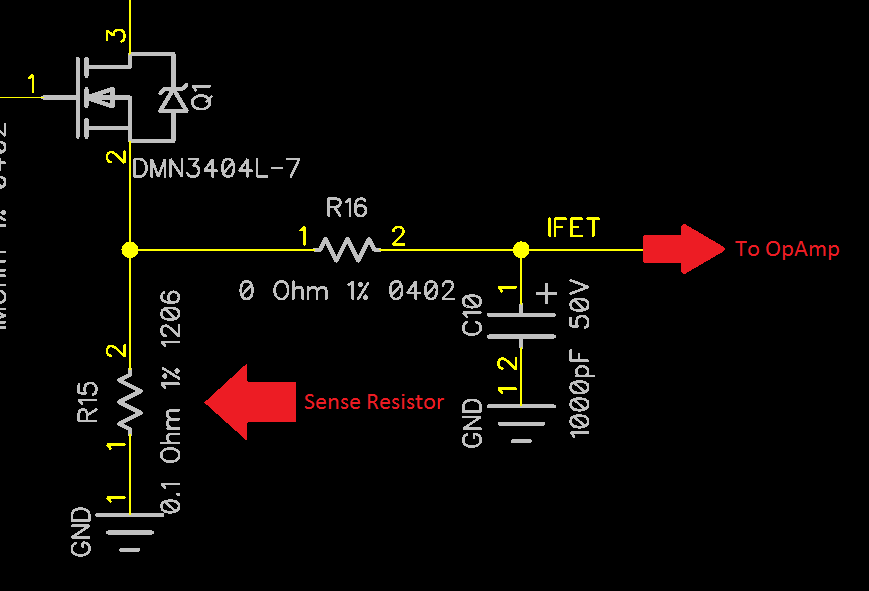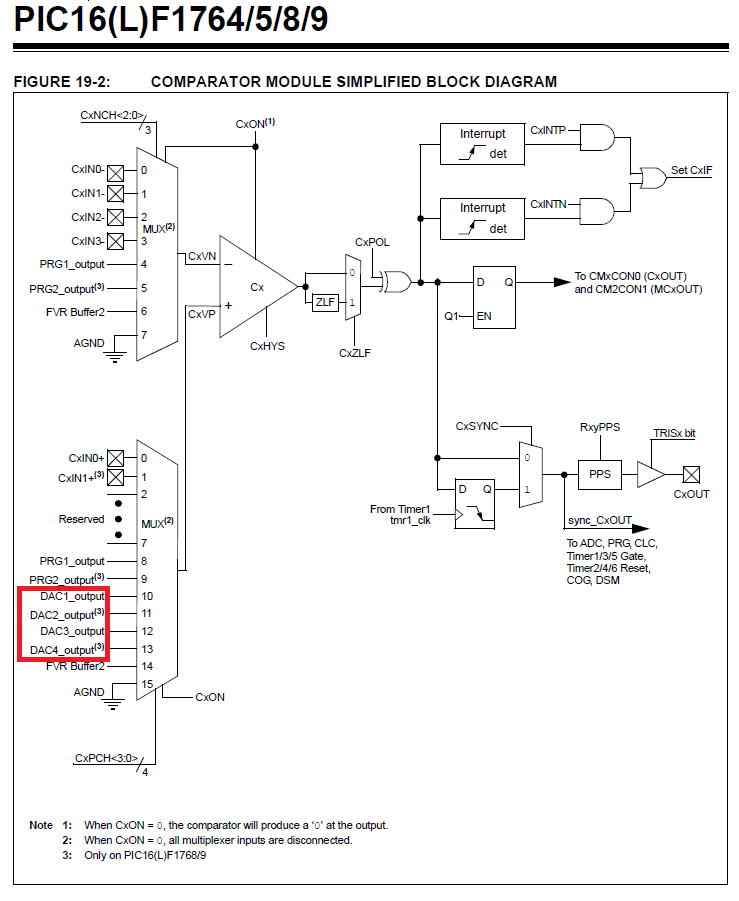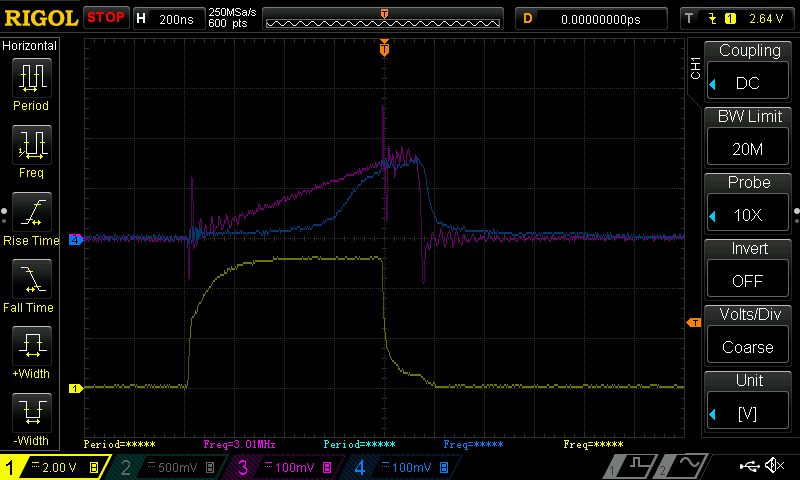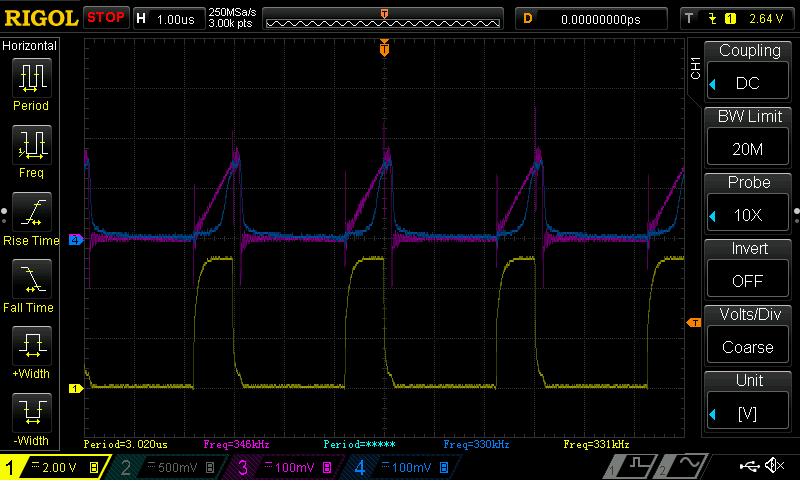Wait a second...
I just finished uploading my latest project log, and it got me thinking. Maybe I can get rid of the OpAmp altogether and still successfully implement over-current protection.
Here's the thought. The way the latest SEPIC design implements over-current protection is by amplifying a small voltage drop across a sense resistor, right after the MOSFET.

The truth is, the PIC16F1764 has a DAC that can be wired as one of the inputs to the internal comparators.

So instead of amplifying the signal using a OpAmp, I can use a DAC to decrease the comparator's input voltage, essentially doing the same thing.
This is just a firmware change away, so I tried it. It works like a charm! Below is a graph of the net result. The yellow line is the PWM going into the gate of the MOSFET, the magenta is the voltage across the sense resistor, (the blue is the OpAmp voltage, set as unity gain (hack needed to make this work with current PCB)).


Notice the smooth ramp-up in voltage on the magenta line. That's the voltage increasing across the sense resistor. By changing the output of the DAC connected to the comparator, I can change the over-current set point. Neat, don't you think?
Ok, so now to find a MCU with a high-speed PWM, two comparators and a DAC that can connect to a comparator inputs. Should be easy to find.
HA, check this out: brand new chip: PIC16F15323, $0.53 @ 1k! If the PWM lives up to the datasheet, we might have a winner. This MCU doesn't have the 100mA GPIO drivers, but at 50mA I can double down on the number of pins used to drive the MOSFET. This just might work.
Needless to say, I've ordered some of these PICs. I'll keep you posted with more details.
 Jonathan Bruneau
Jonathan Bruneau
Discussions
Become a Hackaday.io Member
Create an account to leave a comment. Already have an account? Log In.